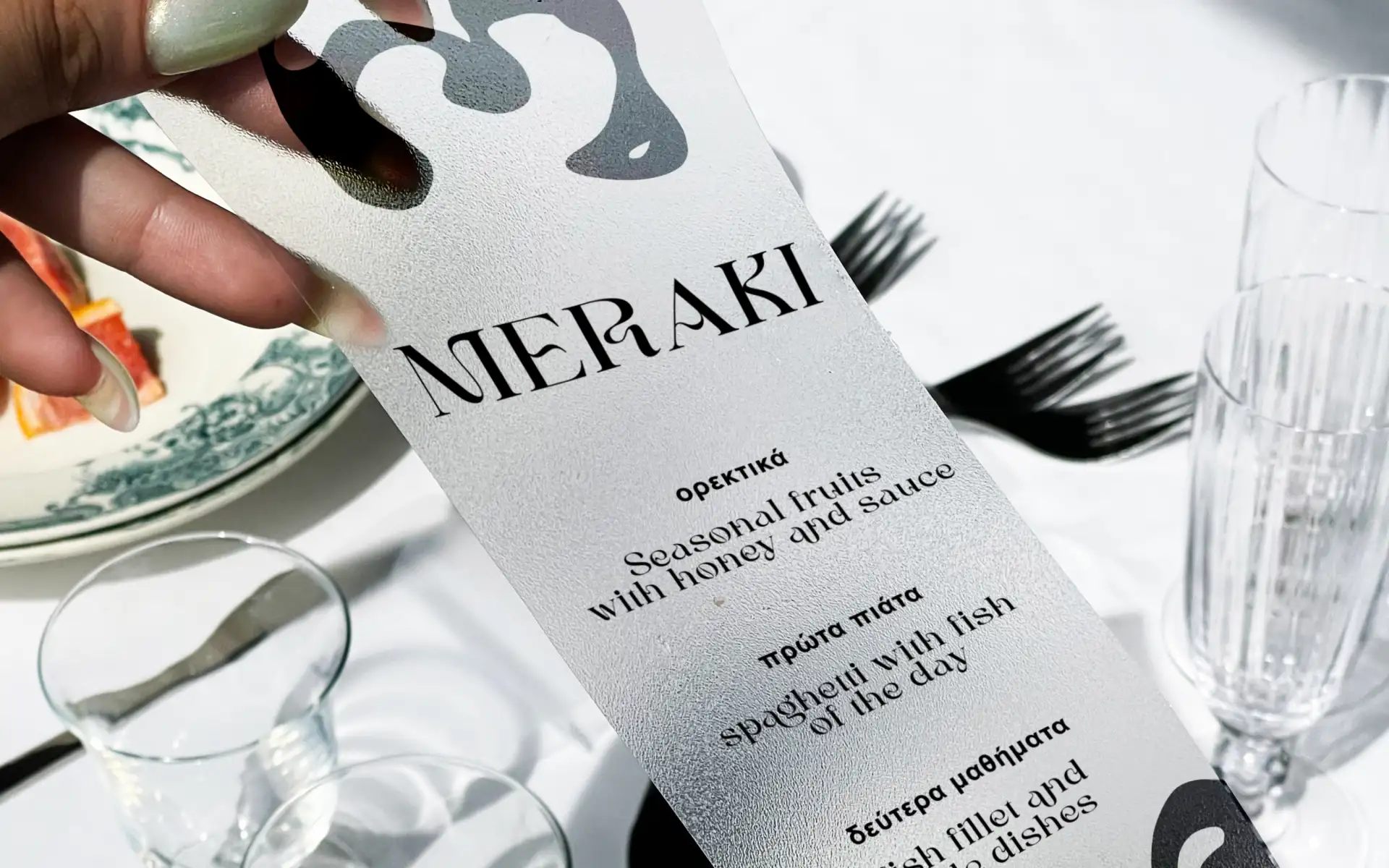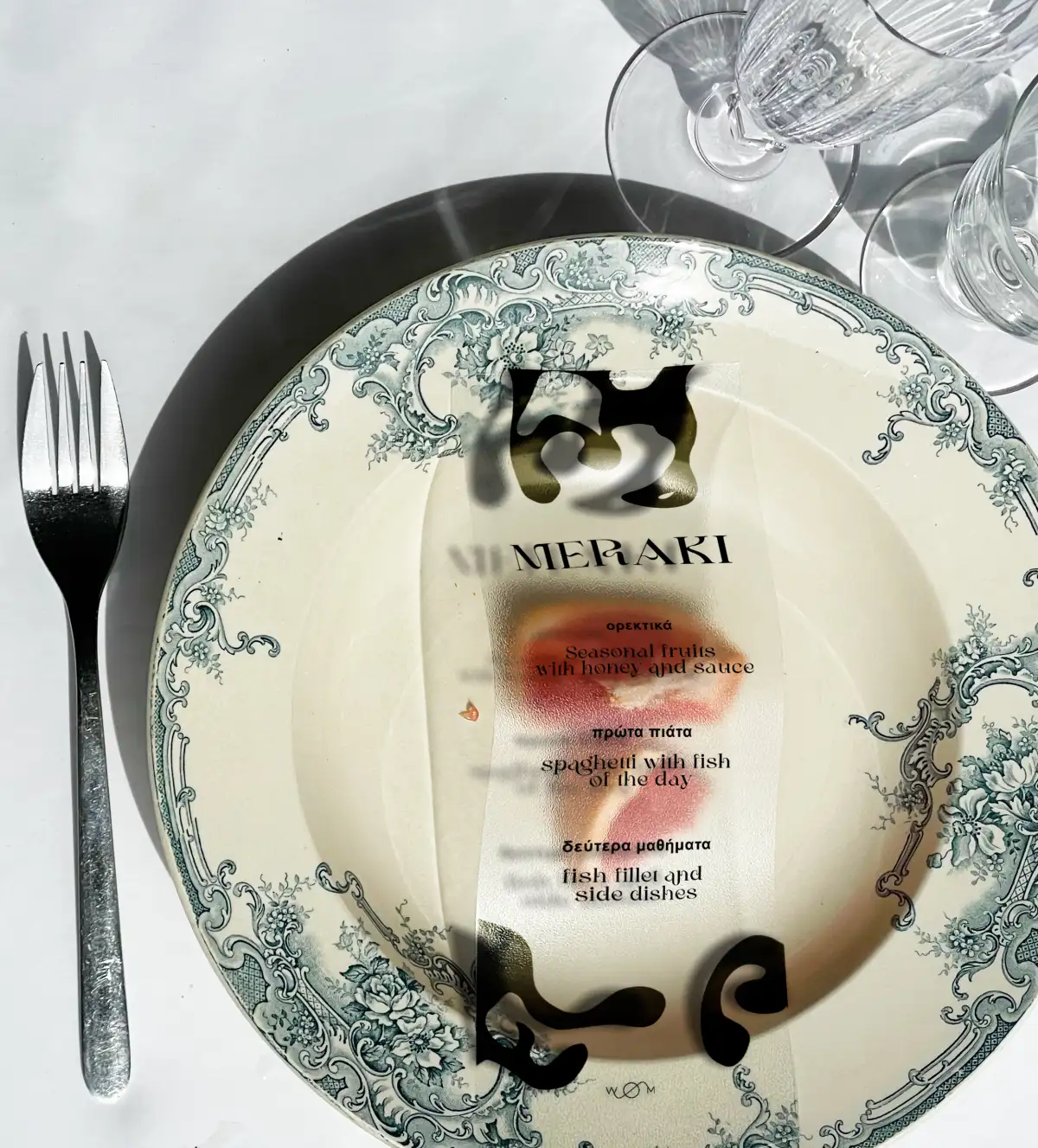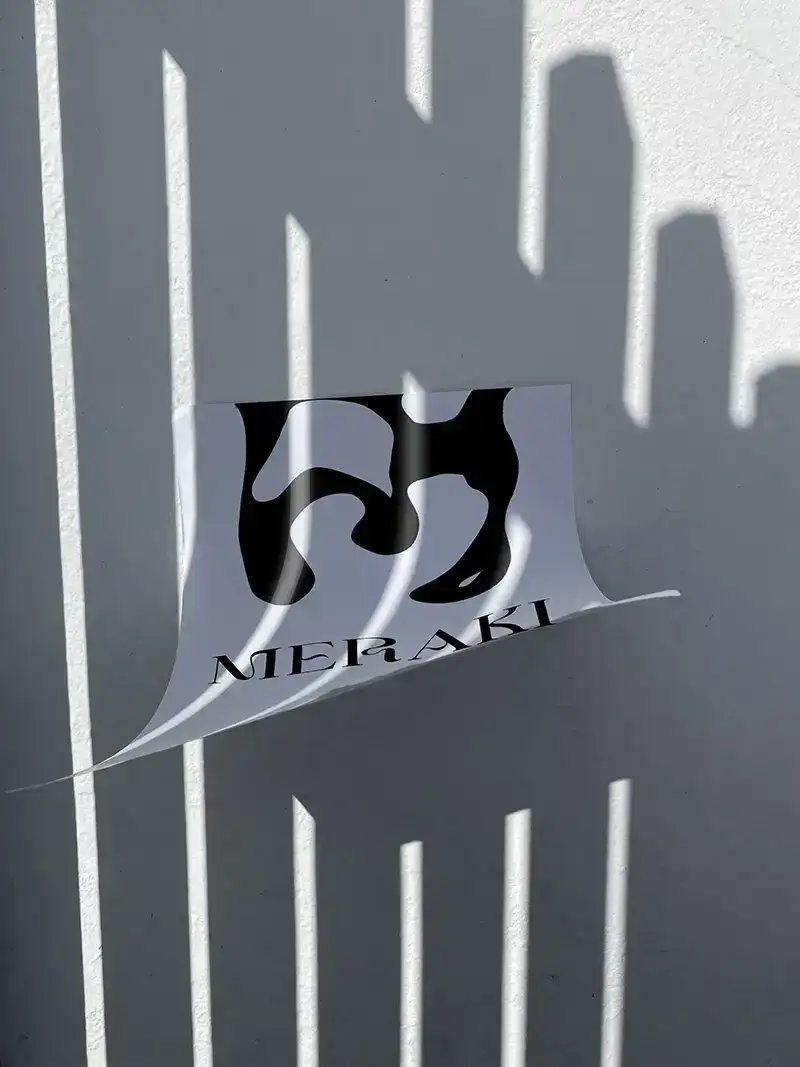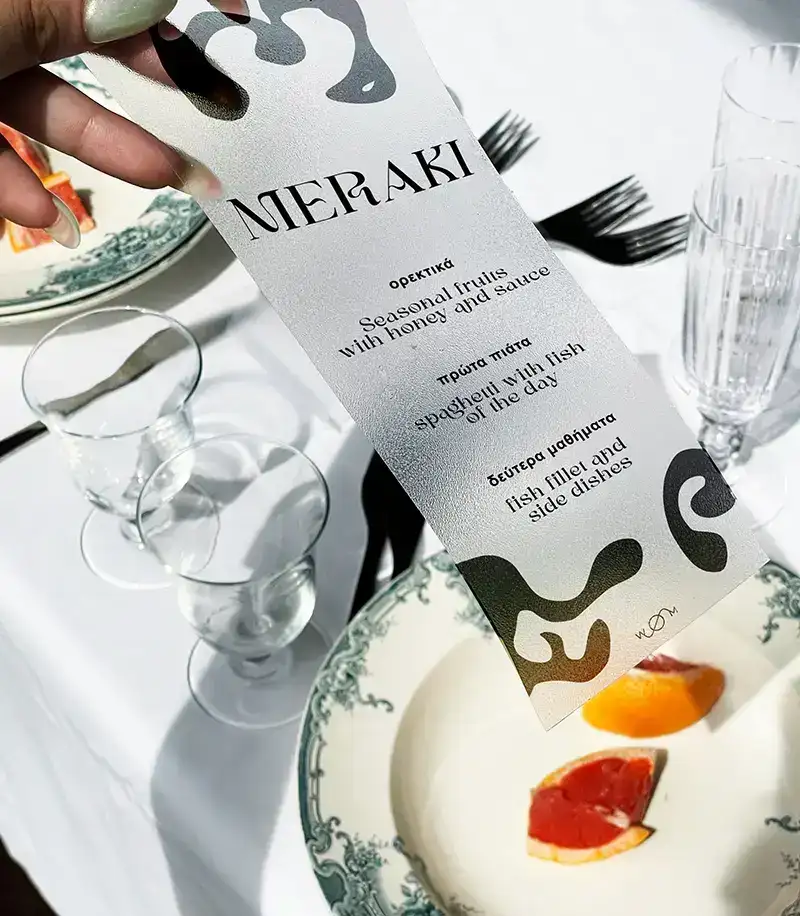naming strategy
MERAKY MYKONOS
Naming, Visual Identity & Menu Design for a High-End Gastronomic Concept

Overview
Deliverables:
· Naming strategy & cultural research
· Visual identity & type system
· Custom menu design (EN/GR)
· Table styling & mise en place direction
· Brand tone & storytelling keywords
· Art direction for photo & print assets
#branding for gastronomic concepts #visual identity for culinary experiences #menu design for luxury restaurants #high-end hospitality brand design #cultural storytelling for food & lifestyle #menu design agency high end
THE CHALLENGE
The brief was ambitious, but common: “we want something elegant, inspired by the Cyclades.”
The real issue? There was no brand: no name, no content, no recognisable assets just a concept built around a sensorial table.
MERAKI wasn’t a restaurant, and wasn’t a product. It was a format without definition: part hospitality, part performance, part food design.
The challenge was to give shape, tone, and visibility to something that couldn’t be explained with typical food or lifestyle branding.
We needed to build a brand identity system for a high-end dining experience, made to seduce editors, curators, and concept store buyers—not tourists scrolling for dinner spots.
STRATEGIC INSIGHT
Visual clutter is the death of premium perception.
In high-end dining and hospitality, what creates value it’s what you leave out.
We weren’t working on “look & feel.”
We were engineering selective perception: how to build a brand where every visual, word, and format creates suggestion and not noise.
Most projects in this space drown in vague Mediterranean clichés.
We used the opposite approach: strategic understatement.
Every choice ( naming, type, paper, Language) had to carry fluency in silence, design culture, and the subtle signals of premium food branding.
The product needed semantic weight and aesthetic direction, because no one pays €180 for a menu that feels like a Pinterest idea.
THE IDEA: FROM SET MENU TO CULTURAL FORMAT
We named it MERAKI a Greek word describing the soul put into creative work.
It spoke softly, yet firmly: about care, intentionality, and that exacting Mediterranean way of doing beauty through simplicity.
What we did:
• Developed a typographic and gestural identity abstract, minimal, and rooted in Cycladic references
• Crafted a menu printed on sea-glass-inspired material, designed to interact with light, shadow, and mise en place, blurring the line between object and atmosphere.
• Crafted bilingual content (Greek/English) with tone consistency across touchpoints
• Directed the artistic mise en table, aligning print, object and plating in one language
• Created assets ready for editorial coverage, event launches, and product extension
TAKEAWAYS
• Branding for food today isn’t about hunger but it’s about culture.
• A menu is not a list but it’s a medium.
• High-end experiences don’t need to explain but they need to hold tension.
• Visual restraint is the new signal of value.
• Naming matters most when it becomes atmosphere



The Power Behind a Name: Why Naming Strategy Matters
In the saturated landscape of today's global market, a product or service is often met with dozens of competitors the moment it launches. What can make it stand out instantly? Often, it's the name. A well-executed naming strategy goes far beyond creativity or clever wordplay. It is a deliberate and strategic process that can shape perception, communicate value, and lay the foundation for brand success.
The right name has the power to evoke emotion, suggest a benefit, indicate positioning, or tell a story. It is frequently the first point of contact between a company and its potential audience. A weak or generic name, even if accompanied by significant investment in marketing, can struggle to leave a lasting impression. Conversely, a strong name developed through a refined naming strategy can accelerate brand recognition, ease entry into crowded markets, and resonate across cultures and platforms.
For businesses aiming to disrupt, differentiate, or dominate a category, investing in naming strategy is not a branding luxury—it’s a critical growth asset. From product lines to new ventures and digital platforms, every successful launch should be rooted in a name that performs as powerfully as the product it represents.
The Science Behind the Creativity
Naming may seem like a creative exercise, but a successful naming strategy is grounded in research, analysis, and linguistic precision. It takes into account trademark clearance, semantic implications across languages, phonetic impact, searchability, and domain availability. Furthermore, it must consider alignment with broader brand architecture and long-term scalability.
Professionals engaged in naming strategy use tools like competitor audits, cultural insight reports, linguistic stress testing, and cognitive perception studies. These aren’t abstract concepts; they are methodologies designed to ensure the name supports strategic business goals. For example, a tech startup looking to scale globally needs a name that is not only memorable but also linguistically neutral and easy to pronounce across markets. A wellness brand, on the other hand, may benefit from a name that feels intimate, calming, or ritualistic.
Effective naming is therefore rarely intuitive. Choosing a name based on personal preferences, team-wide votes, or internal anecdotes may feel collaborative but can be strategically disastrous. A naming strategy driven by sentiment rather than insight often leads to missed opportunities, weak positioning, or future rebranding expenses.
From Launch to Longevity: The Strategic Impact of a Name
When executed well, a naming strategy becomes one of the most enduring components of a brand. Advertising campaigns evolve, packaging is redesigned, websites get updated—but the name usually remains. It acts as a cognitive anchor in the minds of consumers and stakeholders alike. A strategically chosen name fosters brand equity, investor confidence, and category leadership over time.
Many iconic brand names we recognize today were the result of intensive naming strategy work, not spur-of-the-moment inspiration. They were crafted to carry meaning, differentiation, and emotional pull from day one. This becomes especially critical when launching a product into highly regulated industries, cross-cultural markets, or digital spaces where semantic clarity and uniqueness are essential.
In essence, naming strategy is not a final coat of polish; it is a foundational element of brand architecture. For businesses seeking to make a powerful debut or reimagine their market presence, the naming process should be approached with the same strategic rigor as product development or go-to-market planning. A great name won't guarantee success, but the wrong one can certainly limit it.

